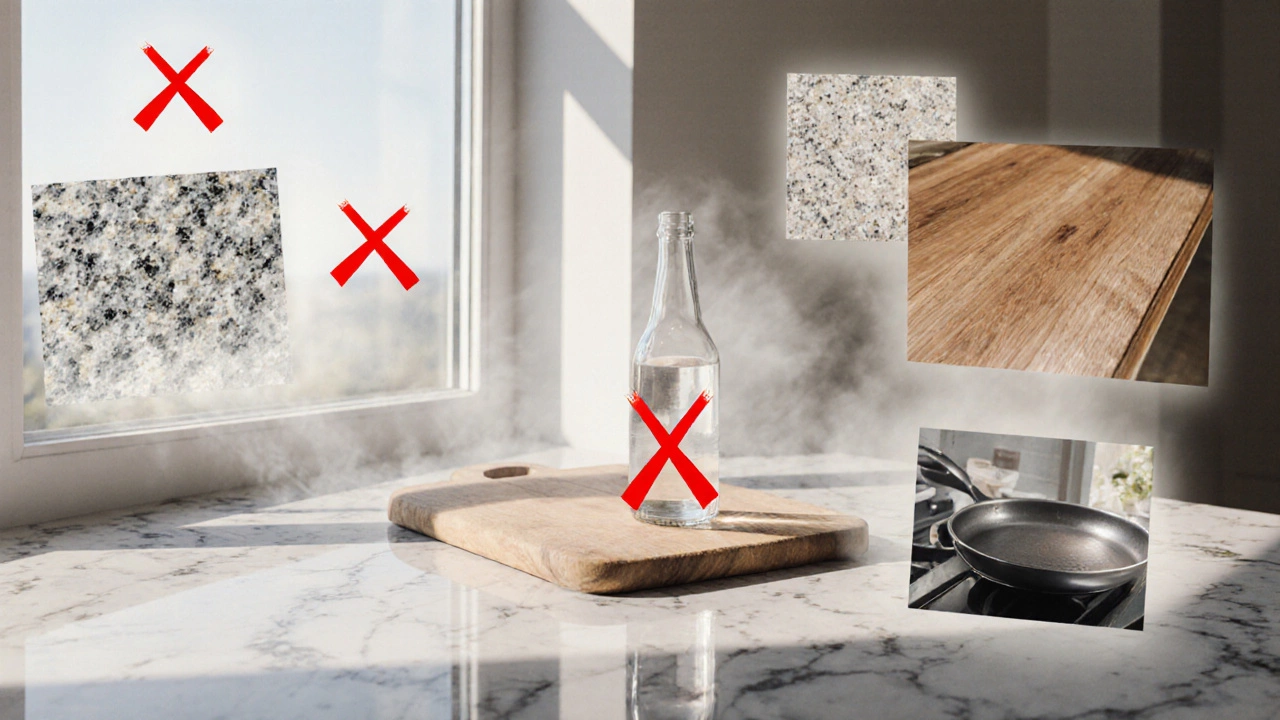Vinegar Damage: What It Is and How to Stop It
When dealing with Vinegar Damage, the harm caused by undiluted or long‑term exposure of vinegar to surfaces, fabrics, and finishes. Also known as vinegar corrosion, it can leave stains, weaken fibers, or etch finishes if you’re not careful. Vinegar cleaning, the practice of using diluted white vinegar for environmentally friendly cleaning is popular, but the same acid that lifts grime can also strip color or dissolve glue when mis‑used. The same risk shows up on fabric upholstery, soft furniture coverings made from cotton, polyester, or blends and on hardwood floors, solid wood surfaces with protective finishes. Understanding the chemistry behind the damage helps you keep your home spotless without costly repairs.
Why Vinegar Can Hurt More Than It Helps
Vinegar’s main culprit is acetic acid, usually around 5 % in household white vinegar. Vinegar damage often follows three key attributes: high acidity, extended contact time, and vulnerable material type. For example, a 10‑minute splash on a cotton sofa can break down dyes, while a quick mist on sealed glass does almost nothing. The same principle applies to DIY cleaning solutions, homemade mixes of vinegar, water, and occasional boosters like baking soda. When you dilute vinegar to a 1:4 ratio, the acid level drops enough to lift grime but stays safe for most sealed surfaces. However, if you skip dilution, the acid penetrates fibers, causing the “vinegar damage” effect: color fading, weakened fibers, and lingering smells. This relationship can be expressed as a simple triple: *Vinegar damage* **requires** *proper dilution* to avoid *material degradation*. Another triple: *Vinegar damage* **encompasses** *fabric upholstery stains* when *contact time exceeds 5 minutes*. Recognizing these patterns lets you set safe limits before you reach for the spray bottle.
Prevention starts with a quick test. Dab a cotton swab with your diluted mix, press it on an inconspicuous spot, and wait 30 seconds. If the color stays unchanged, you’re good to go. For hardwood floors, always check that the finish is sealed; unfinished wood will absorb acid and develop white spots. When cleaning windows, use a spray bottle with a fine mist to keep the solution from pooling. And remember, the same drink‑mix that stars in a kitchen hack can become a household hazard if you ignore the material‑specific rules. By matching the right ratio to the right surface, you turn a potential problem into a safe, green cleaning habit.
If you’ve already seen vinegar damage, don’t panic. For fabric upholstery, a gentle rinse with cool water followed by a mild dish‑soap solution can lift the acid and restore color. Blot, don’t rub, to avoid spreading the stain. Hardwood floors benefit from a neutralizing wipe: a mix of water and a few drops of olive oil can rebalance the pH and re‑shine the finish. For more stubborn spots on tile or glass, a paste of baking soda and water works as a mild abrasive that neutralizes acid without scratching. The collection below dives deeper into these fixes, offering step‑by‑step guides for upholstery, sofas, windows, and even pressure‑washing equipment that might encounter vinegar residues. You’ll find practical tips, safety reminders, and real‑world examples that let you clean confidently while keeping vinegar damage at bay.

Surfaces You Should Never Clean With Vinegar - Risks & Safe Alternatives
Learn which surfaces can be damaged by vinegar, why the acid reacts, and safe alternatives for stone, wood, metal, painted walls, screens and more.
Read More